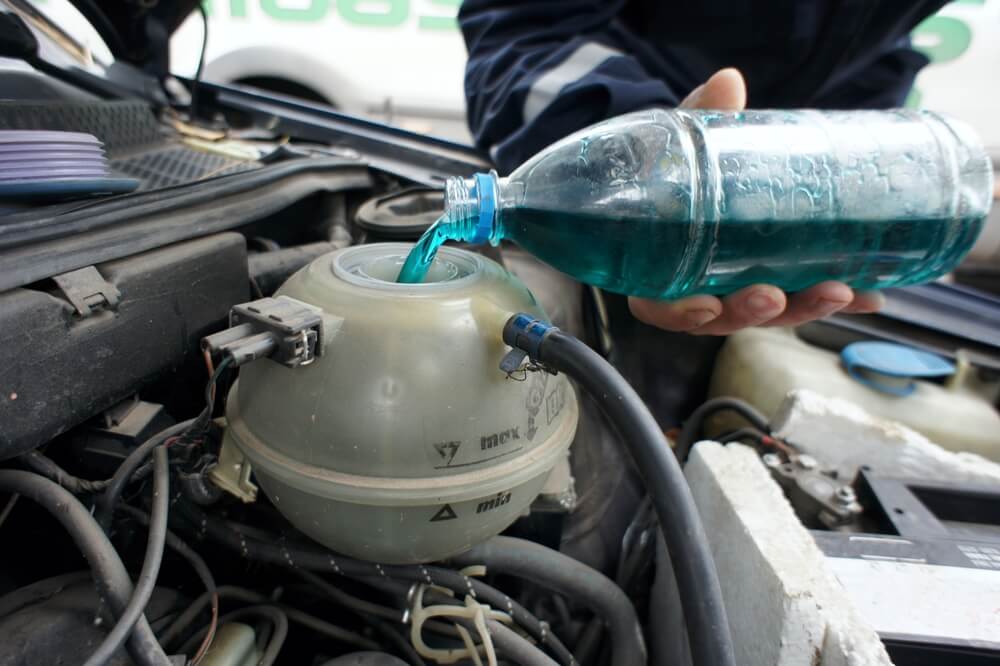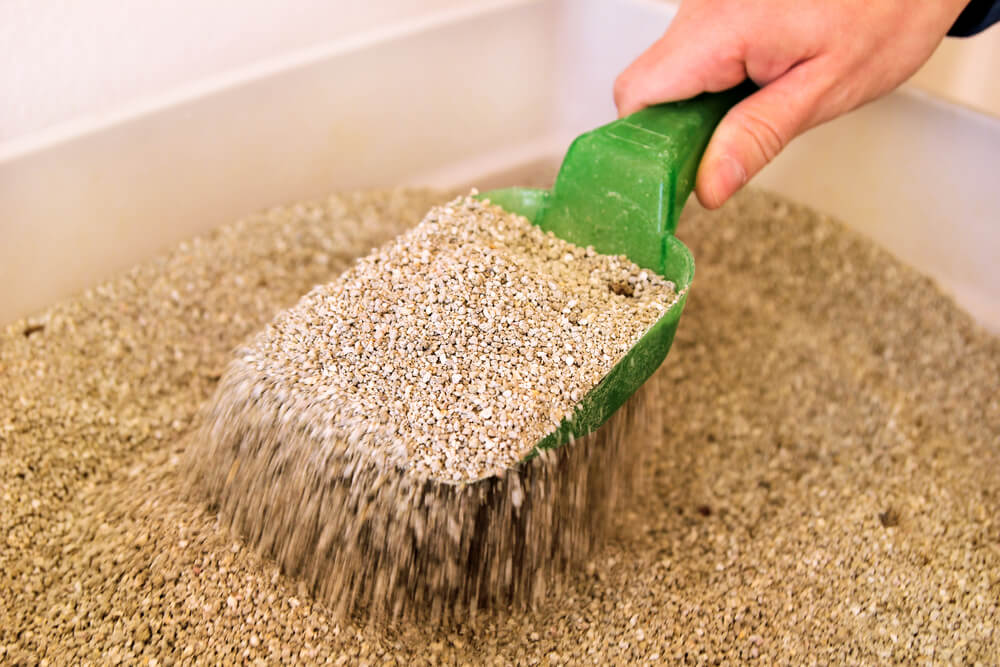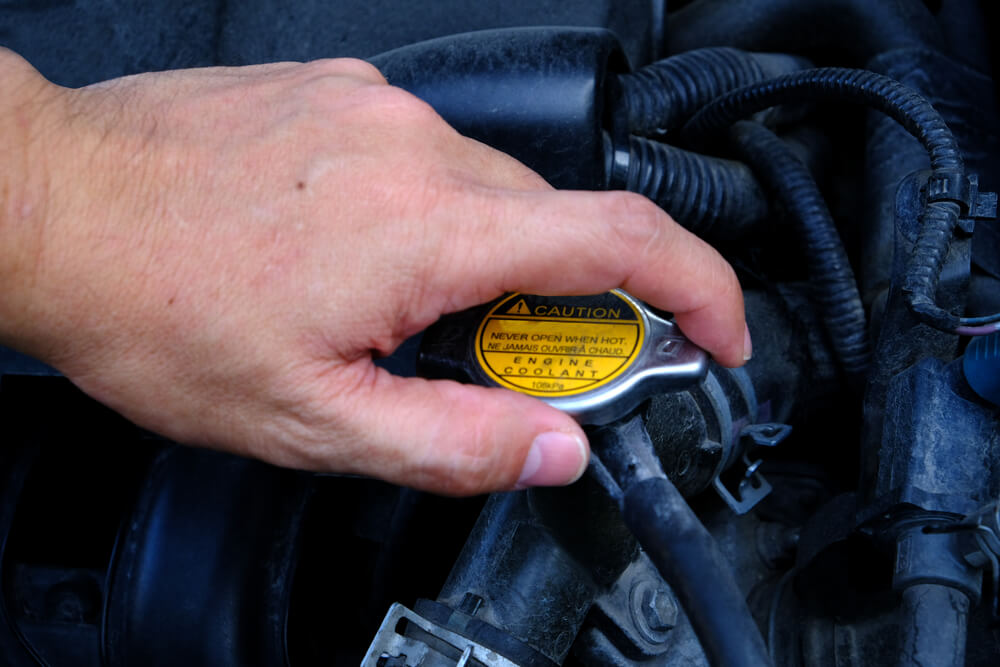Whether you experience frigid, icy winters or live in a more temperate area of the country, antifreeze is an essential fluid for your vehicle. Most modern motors use water to keep the engine from overheating. While plain water works in a pinch, a mixture of water and engine coolant, or anti-freeze, is much safer for your car. Like replacing windshield wiper fluid, adding engine oil, and inflating your tires, adding anti-freeze is a simple maintenance project that most drivers are able to complete with ease.
11 Steps for Adding Anti-freeze on Your Own
- 1
Antifreeze is poisonous to human and animals. Keep pets and small children out of the area whenever you are working with antifreeze. Make sure to properly clean up any spills. If a person or pet accidently ingests antifreeze, call a poison control hotline or 911 immediately.
Pour cat litter or other absorbent you have on the spill, clean the area using gloves and napkins then wash the area with soap![cat litter]()
- 2
Antifreeze needs to be replaced about every twelve months. Replacing antifreeze is an inexpensive and easy car maintenance project, so there’s really no reason to wait any longer between replacements.
- 3
Make sure that your engine is completely cool before beginning the process of replacing antifreeze. Working with hot antifreeze can cause severe scalding.
- 4
Pop the hood and locate your vehicle’s radiator. Radiators are generally located directly underneath the engine. Refer to your vehicle’s owner’s manual for the exact location of the radiator in that model.
You will usually notice a warning on the coolant cap that reminds you to let the engine cool off![car radiator]()
- 5
Locate the radiator’s drain cock, an approximately one inch long plug that will begin to unscrew when turned counterclockwise.
- 6
Drain the old antifreeze into an oil pan, disposable pail, or bucket that you use only for this purpose.
- 7
Replace the drain cock by turning it in a clockwise fashion.
- 8
Move back to the top of the vehicle and again locate the radiator. Remove the radiator cap by turning it in a counterclockwise fashion.
The cap can also be round and plastic in case your radiator has a remote reservoir for coolant![radiator cap]()
- 9
There are two options for refilling the radiator. Option one is to use a premixed antifreeze solution. These are readily available at auto parts stores or big box stores. The second option is to mix your own antifreeze solution of one part water to one part antifreeze. Specific instructions regarding mixing will be located on the back of the bottle. Replace the radiator cap.
- q
Start the vehicle’s engine and allow it to run until the heating/cooling gauge on the dash board reaches normal temperature.
The normal operating temperature is typically marked in the middle between cold and hot edges of the gauge![heating/cooling gauge]()
- w
After some of the new antifreeze mixture has begun circulating inside the engine, there will be room for a little more inside the radiator. Turn off your vehicle, open the radiator cap, and add enough of the same mixture you used in step nine to top off the radiator. Replace the radiator cap.
Here is a video guide for you that includes the whole procedure:
Again, antifreeze is very harmful to people and animals. Some brands of antifreeze taste sweet and are therefore even more dangerous to pets and wild animals. It must be properly disposed of. If your home is connected to a municipal wastewater system or sewer, the treatment plant is most likely able to process antifreeze if it is poured down a sink or flushed. Contact your local water department to be certain. If this is not the case for your home, you can contact your city hall or a local auto parts store for disposal suggestions. Also make sure to properly dispose or any rags, buckets, or funnels you used during this project.









